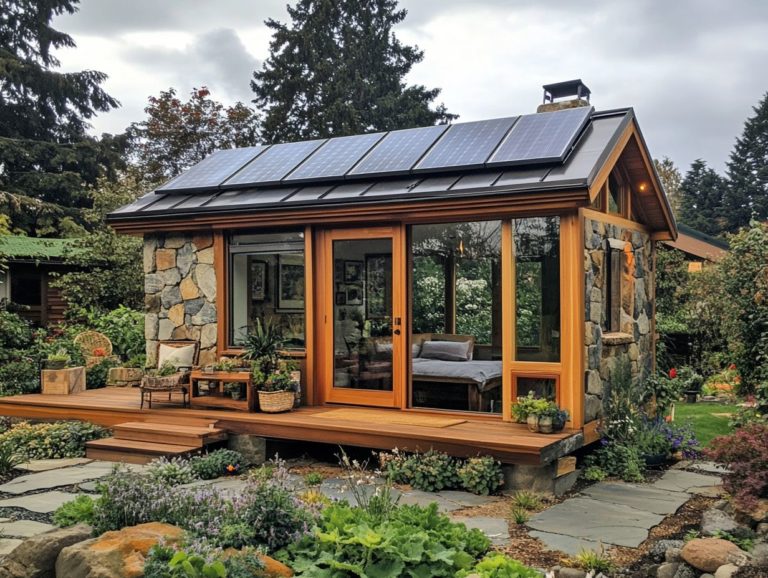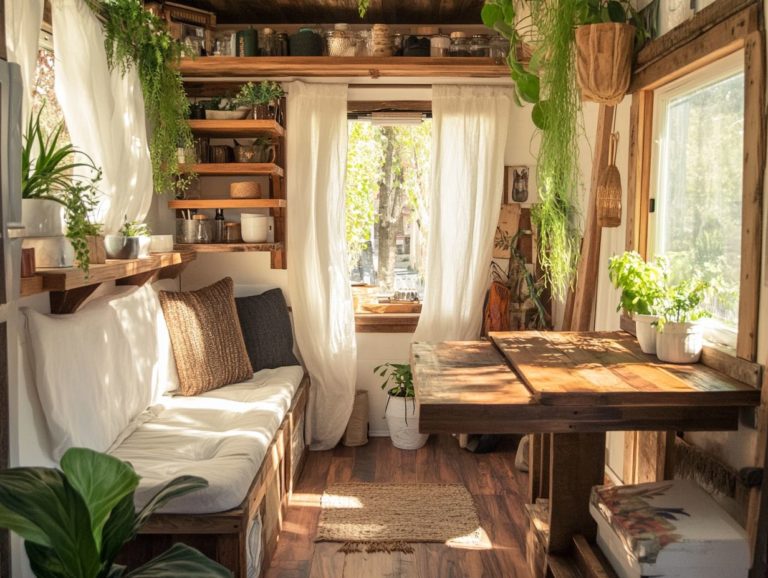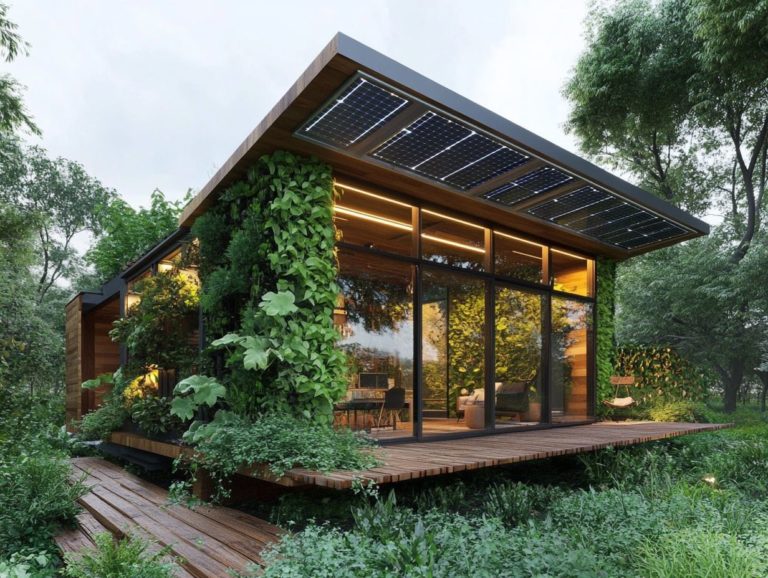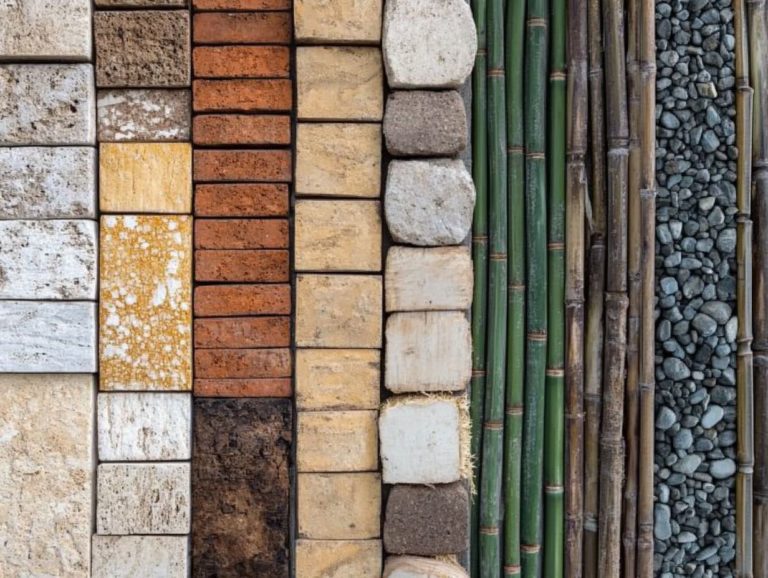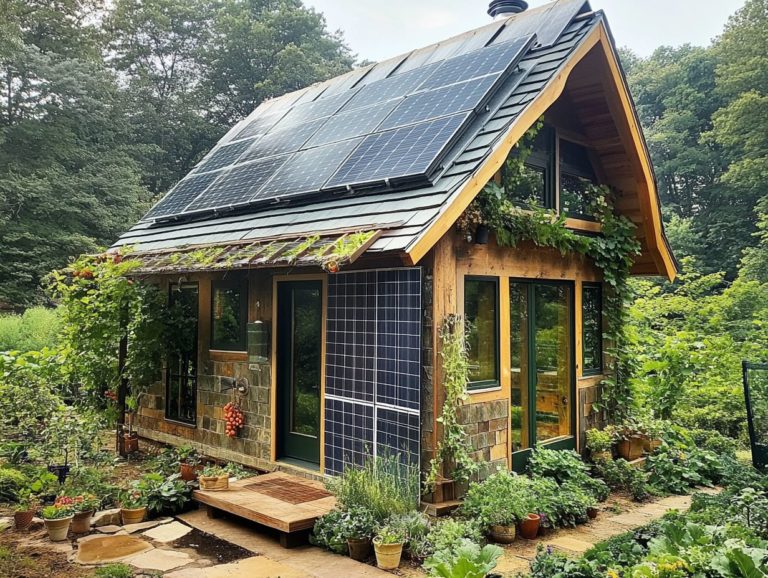Sustainable Paint Options for Tiny House Interiors
When it comes to decorating your tiny house, selecting the right paint can truly transform your space not only enhancing aesthetics but also promoting your health and benefiting the environment.
This article delves into sustainable paint options that are ideal for small spaces. You ll explore a range of choices, from natural and low-VOC paints to eco-friendly brands and even DIY recipes, ensuring you find the safest and most stylish options available.
You will also discover tips to apply eco-friendly paint effectively. Give your home the beauty it deserves while making a sustainable choice!
Contents
- Key Takeaways:
- Why Choose Sustainable Paint?
- Natural Paints
- Low-VOC Paints
- Eco-Friendly Paint Brands
- DIY Options for Sustainable Paint
- Tips for Sustainable Paint Application
- Frequently Asked Questions
- What are sustainable paint options for tiny house interiors?
- Why should I choose sustainable paint for my tiny house interior?
- Are there any eco-friendly brands that offer sustainable paint options for tiny house interiors?
- What are low or zero VOC paints and why are they considered sustainable?
- Can I make my own natural paint for my tiny house interior?
- How can I dispose of leftover paint in a sustainable way?
Key Takeaways:
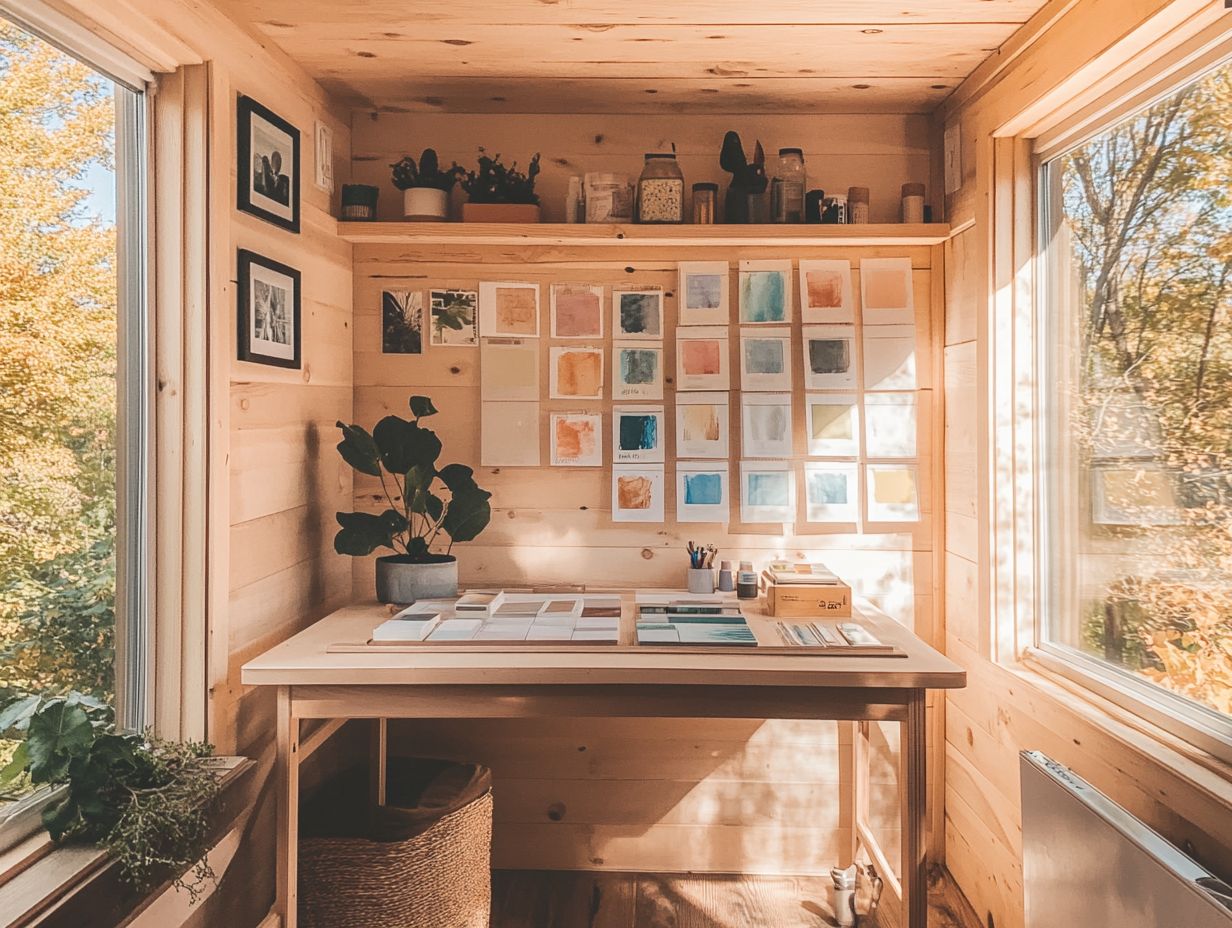
- Natural paints are healthier options made from natural ingredients like clay, plant oils, and minerals, improving air quality and durability.
- Low-VOC paints reduce indoor air pollution by emitting fewer harmful chemicals.
- Choose reputable eco-friendly brands for your tiny house that prioritize sustainability and use non-toxic ingredients.
Why Choose Sustainable Paint?
Choosing sustainable paint is crucial for enhancing indoor air quality and fostering healthier living spaces. Traditional paints often harbor harmful chemicals, making eco-friendly options all the more appealing.
By selecting sustainable paints, you embrace products crafted from natural pigments and materials that minimize health risks. This mindful choice benefits the environment by reducing indoor pollution and mitigating respiratory issues.
Opting for biodegradable and renewable materials contributes to a healthier environment and showcases your commitment to eco-conscious decision-making.
Natural Paints
Natural paints present a stunning alternative to conventional options, utilizing organic materials and natural pigments that align with eco-friendly principles.
These paints are free from harmful chemicals and are crafted to meet stringent health standards. This makes them an exceptional choice for anyone who values indoor air quality.
Many natural paints use non-toxic ingredients and natural latex, delivering durable solutions for your home improvement needs.
Ingredients and Benefits
The ingredients in eco-friendly paints, including natural pigments and organic materials, contribute to their non-toxic qualities, enhancing their durability and aesthetics.
These paints often utilize sustainable resources like plant-based oils and resins, boosting their longevity while providing a rich, vibrant color palette. By reducing harmful VOCs, eco-friendly paints deliver superior adhesion properties, making them perfect for both indoor and outdoor applications.
Their versatile formulations allow you to use them on various surfaces, from wood to drywall, ensuring every corner of your home benefits from a healthier alternative. With their ability to endure the test of time while maintaining visual appeal, these paints elevate your spaces and reflect your commitment to sustainability.
Ready to transform your tiny house? Start your eco-friendly painting journey today!
Low-VOC Paints
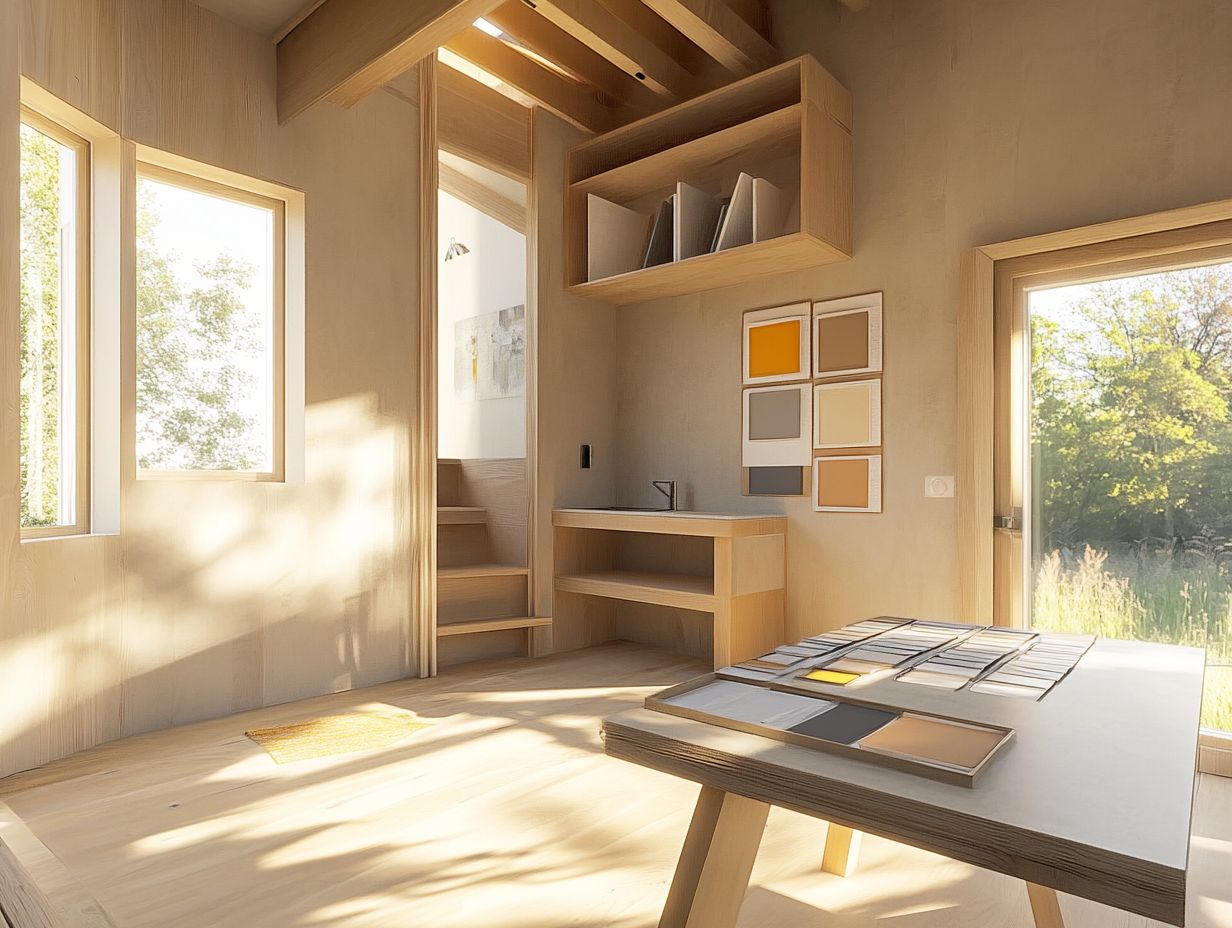
Low-VOC and zero-VOC paints signify a remarkable leap in paint technology, designed specifically to minimize the release of volatile organic compounds (VOCs), which are chemicals that can evaporate and pollute indoor air. These compounds can harm indoor air quality and contribute to respiratory problems.
For the eco-conscious consumer, these paint options stand out as a top choice, adhering to rigorous health standards and creating a healthier environment for families and individuals, especially those who are particularly sensitive to air pollution.
With an impressive array of color choices at your fingertips, low-VOC paints allow you to achieve your desired aesthetic while simultaneously promoting a healthier living space.
Reducing Indoor Air Pollution
Reducing indoor air pollution is a key consideration when selecting paint. Many traditional options can release harmful chemicals that compromise your indoor air quality and contribute to respiratory issues. By opting for eco-friendly paints specifically designed to minimize these emissions, you can significantly lower the health risks associated with volatile organic compounds.
This proactive choice elevates the comfort of your living spaces and creates a healthier environment for your family, particularly for children who are often more vulnerable to indoor pollution.
Eco-friendly paints are especially beneficial for those who are more susceptible, including the elderly and individuals with pre-existing health conditions like asthma or allergies. These paints typically contain natural, non-toxic ingredients, meaning free from harmful chemicals, that emit little to no odor, making the painting process smoother and more enjoyable.
By enhancing air quality, eco-friendly formulas aim to reduce headaches and fatigue commonly linked to poor ventilation while helping maintain mental clarity, potentially boosting your productivity.
Choosing sustainable paints reflects a commitment to fostering a healthier future for everyone, highlighting the crucial connection between your living spaces and overall well-being.
Eco-Friendly Paint Brands
In the realm of eco-friendly paint brands, a select few truly distinguish themselves through their unwavering commitment to sustainability and the use of non-toxic ingredients. Brands such as Benjamin Moore Eco Spec, Clare Paint, and ECOS Paint have earned a reputation for their strict adherence to environmental standards, frequently securing prestigious certifications like Green Seal and EcoLogo.
Choose these brands now to start improving your home s air quality! They not only offer an impressive array of color options but also play a vital role in fostering healthier living environments by prioritizing indoor air quality and minimizing harmful emissions from their paint formulations.
Top Picks for Tiny House Interiors
When it comes to tiny house interiors, choosing the right eco-friendly paints is crucial for achieving the perfect blend of aesthetics and functionality while maximizing your space. Opt for brands that provide durable materials and sustainable design options, allowing you to craft a beautiful and comfortable environment without sacrificing your ecological values.
Utilizing eco-friendly paints elevates the visual appeal of your compact living space and supports healthier living by eliminating harmful emissions found in traditional paint products. To learn more about how these choices impact your home, explore the future of sustainable materials in tiny housing.
These paints come in a fantastic range of colors and finishes that reflect your personal style, making it effortless to transform even the smallest rooms into cozy, inviting havens. Brands like Benjamin Moore and Sherwin-Williams, for instance, offer low-VOC options featuring vibrant colors perfect for brightening up tiny areas.
By selecting paints free from toxic ingredients, you can enjoy peace of mind, knowing you re contributing to a sustainable future while enhancing the overall ambiance of your home. Such thoughtful choices cater to those who value both health and aesthetics, turning limited square footage into a serene sanctuary.
DIY Options for Sustainable Paint
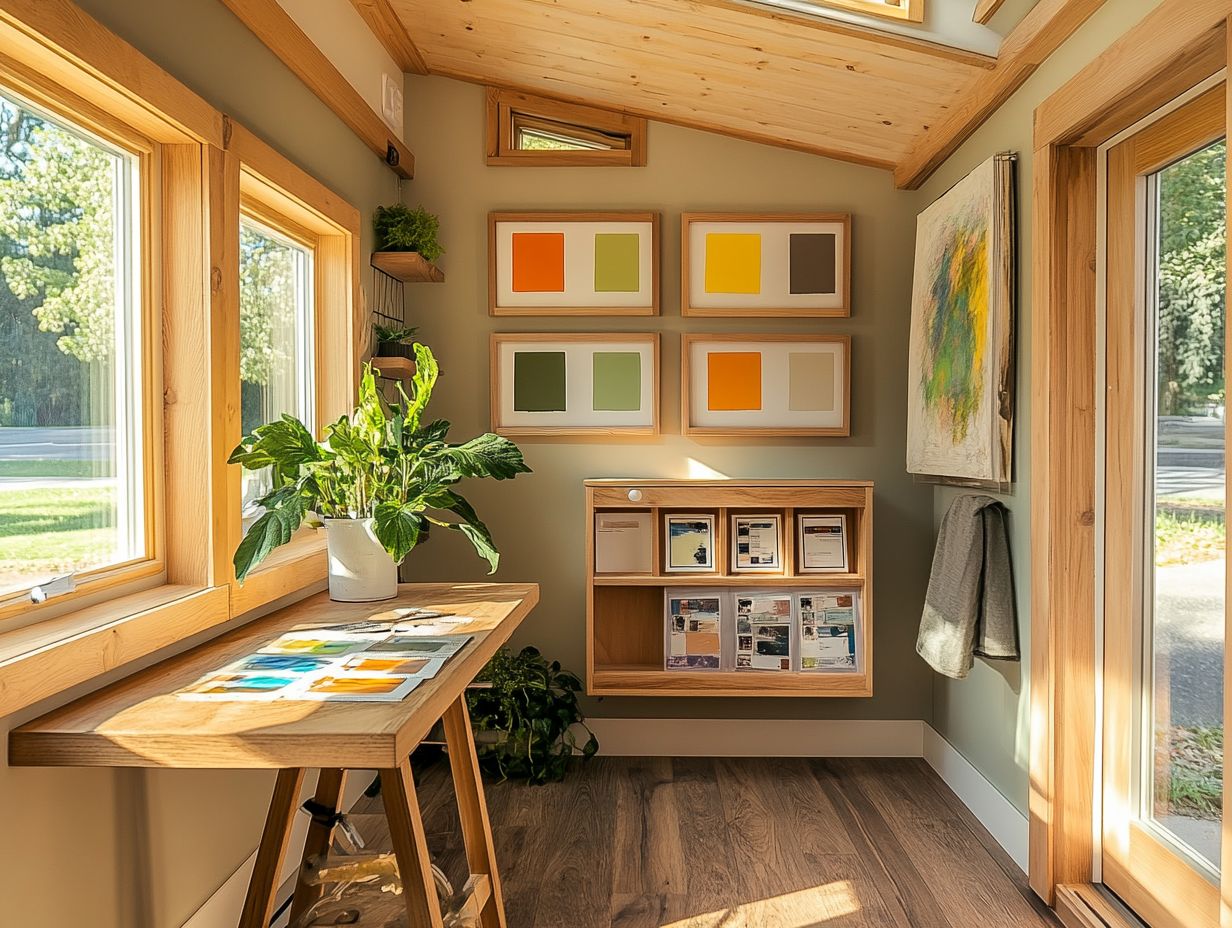
Exploring DIY options for sustainable paint presents a remarkable opportunity for you to craft your own environmentally friendly alternatives. Not only do these choices save you money, but they also contribute to a healthier living space.
By utilizing organic materials and natural pigments, you can create paint formulations that reflect your personal aesthetic while aligning with eco-friendly standards. Using biodegradable ingredients minimizes your environmental footprint and injects a touch of creativity into your interior painting projects. For those interested in building sustainably, check out the best resources for sustainable tiny house materials.
Recipes and Techniques for Homemade Paint
Creating your own homemade paint is not just a fun DIY project; it s a chance to tap into natural ingredients and non-toxic materials. This gives you a safe, eco-friendly alternative to traditional paint options.
By choosing biodegradable components and following straightforward formulations, you can achieve a beautiful finish while reducing the health risks often linked to commercial paints. Embracing this sustainable approach, including understanding the future of sustainable materials in tiny housing, nurtures your creativity and fosters a healthier living environment for everyone in your home.
To get started, think about using materials like flour, water, salt, and food coloring. These can be easily mixed to create vibrant, colorful paints that are safe for both kids and adults.
Techniques such as heating the flour and water over low heat until thickened, then adding the coloring, will give you a smooth consistency ideal for painting on various surfaces. Don t hesitate to experiment with alternative binders like cornstarch or even yogurt; these can offer unique textures and introduce an artistic element that celebrates the beauty of natural pigments.
By sharing these crafting techniques, you can turn simple ingredients into extraordinary artistic expressions while prioritizing health and sustainability.
Tips for Sustainable Paint Application
Using smart ways to apply sustainable paint can greatly elevate the performance and longevity of your eco-friendly paint choices. This ensures your home not only dazzles with beauty but also maintains excellent indoor air quality.
Following best practices during the painting process such as selecting the right tools and ensuring adequate ventilation is crucial for minimizing health risks linked to conventional paints. This ultimately fosters a healthier living environment.
By prioritizing durable materials, you can achieve enduring results that resonate with your eco-conscious values.
Best Practices for a Successful Project
Follow best practices now to ensure your project shines! It’s essential to prioritize eco-friendly methods and minimize health risks. This means selecting materials that improve indoor air quality while enhancing the durability of your finish.
Pay attention to your painting techniques and choose the right tools to achieve beautiful, long-lasting results that showcase your commitment to sustainable living.
Opting for low-VOC or zero-VOC paints which have fewer harmful chemicals is a vital step in this journey. Ensuring proper surface preparation like cleaning, sanding, and priming will lead to a smoother finish that lasts longer, cutting down on the need for frequent reapplications. Additionally, considering the environmental impact of sustainable tiny house materials can further enhance your efforts towards eco-friendly living.
Using eco-friendly tools, such as brushes and rollers made from recycled materials, can further lessen your environmental impact. By embracing these sustainable practices, you re contributing to a healthier home and playing a part in the broader effort of environmental preservation.
Frequently Asked Questions
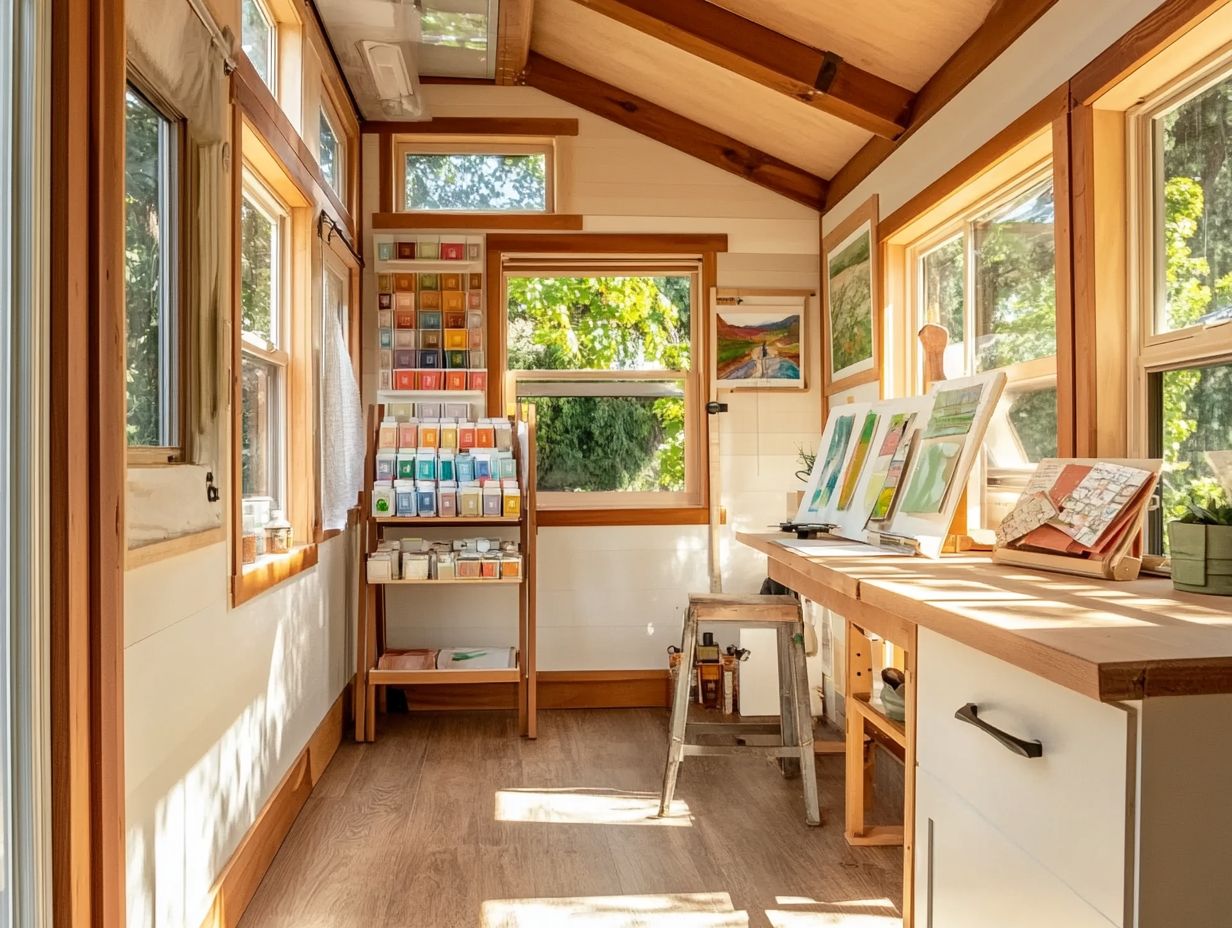
Start your DIY paint projects today and embrace sustainable living!
What are sustainable paint options for tiny house interiors?
Look for low or zero VOC paints, natural options like milk or clay paint, and recycled paints made from leftover materials. Consider exploring natural latex options too!
Why should I choose sustainable paint for my tiny house interior?
Sustainable paint is better for the environment and your health. Unlike traditional paints, they release fewer harmful chemicals into the air.
Are there any eco-friendly brands that offer sustainable paint options for tiny house interiors?
Yes! Check out brands like ECOS Paint, Clare Paint, and Green Planet Paints for excellent sustainable options.
What are low or zero VOC paints and why are they considered sustainable?
Low or zero VOC paints contain significantly fewer Volatile Organic Compounds than traditional paints. By choosing these options, you’re helping reduce air pollution and promoting a healthier living space.
Can I make my own natural paint for my tiny house interior?
Absolutely! You can create natural paint using milk, clay, or natural pigments. There are many recipes and tutorials available online to guide you.
How can I dispose of leftover paint in a sustainable way?
Instead of throwing leftover paint in the trash, donate it to a recycling center or share it with friends. You can also use it for touch-ups or DIY projects. If none of these options are available, find disposal facilities in your area that accept paint products.

